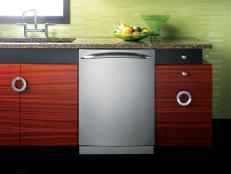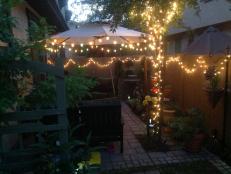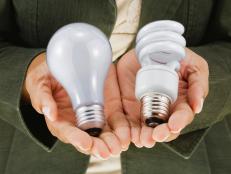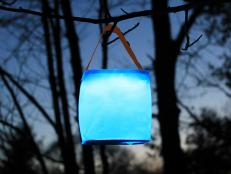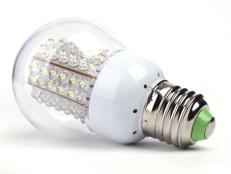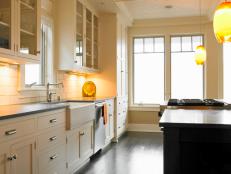Cash In on LED Lighting

The U.S. Department of Energy recently flipped the switch on 174 LED (light emitting diode) lamps, illuminating the National Mall in Washington, D.C., and saving taxpayers 65 percent in energy used for those street lamps. And did you know the crystal ball dropped on New Year's Eve in New York's Times Square uses more than 32,000 color-changing LEDs?
New and super-efficient LEDs aren't just for putting on a big show. The lamps are becoming more available for use in our homes. They're still expensive, often costing $20 to $40 to replace a standard 60-watt incandescent bulb. That's steep. But LEDs will save you money in the long run because they are far more efficient than those old incandescent bulbs, which waste about 90 percent of their energy as heat.
An LED replacement for a traditional 60-watt incandescent bulb will use only 10 to 13 watts, about 20 percent of the energy used by traditional incandescent bulbs. LEDs also last 25 times longer.
Best of all, LEDs cost far less to operate. Here's what it costs to operate a single 60-watt (or equivalent) bulb for two hours a day for one year, in each of the popular home lighting technologies, according to the DOE:
- Traditional incandescent bulb cost $4.80
- Halogen incandescent cost $3.50
- Energy Star-rated CFL cost $1.20
- Energy Star-rated LED cost $1
Because LEDs can last 20 to 25 years, you won't be replacing them often. You may never replace one again. They are even more efficient and longer lasting than compact fluorescent lamps (CFLs), and they do not contain trace levels of mercury like CFLs.
The drawback to LEDs is their steep initial cost, meaning payback won't likely come for years. But as more LED lamps are sold, prices will decrease, likely to $10 to $20 per lamp in a couple of years. We'll probably never see good-quality $1 LEDs, because LED lamps are, in effect, pieces of electronics. The light comes from solid-state circuitry.
Shop Lumens
When looking for LED lights, you're not just looking at wattage, or watt equivalents. Look at lumens, a measure of brightness. Many 40-watt equivalent bulbs are on store shelves today, but their 450 lumens won't be enough for you to read or do detailed tasks under. If you're replacing an inefficient 100-watt bulb, consider an energy-saving bulb that puts out about 1,600 lumens. To replace a 60-watt equivalent, look for a bulb that casts about 800 lumens.
Also consider the color temperature, measured in Kelvins (K). If you like warm, yellowish glow of a traditional incandescent lamp, seek a Kelvin rating of 2700 to 3000. This will often be termed "warm white." Higher Kelvin numbers produce whiter and bluer light.
Be sure the LED lamp you buy is dimmable, if you think you will want to dim it. Many today can work with a variety of dimmers, but it's worth checking.
Heat Buildup
While LEDs are cool to the touch in front, heat can build up in the back. That's why many LED lamps have ridges near their bases to create heat sinks that help disperse heat. This is especially important for recessed lights, where heat can build up in the top of the can.
Seek quality in an LED lamp. There are many relatively inexpensive LEDs on the market that may not last long because of poor design. For this reason, it's best to shop known brands like Philips, Osram Sylvania, GE, Cooper, Juno and Solais.
Which bulbs should you change?
Few of us can afford to change over our entire home to LEDs, so start with a few that will make the biggest difference, such as the ones used the most. Then address the kitchen lights, recreation room and family room.
Do a little at a time, and in a short order you'll be using a lot less electricity. "If you replace 15 light bulbs, you're going to notice a tangible difference in your light bill," says Ed Crawford, CEO of Lamps, Lighting Systems and Controls for Philips Lighting.
Next Up
Smart Appliance Upgrades
6 Lighting Tips That'll Save You Money
Courtesy of Philips






